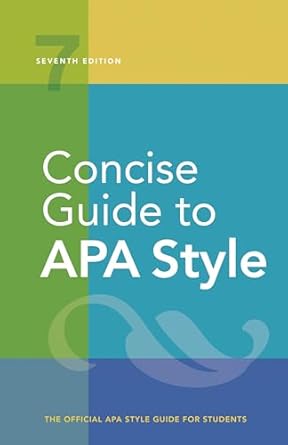[toc]
formatting guidelines expert commentary analysis
Concise Guide to APA Style: 7th Edition (OFFICIAL)
Page 45 Review
Analyzing Formatting Guidelines: A Detailed Commentary
This ebook excerpt delves into the nitty-gritty of formatting academic papers, a crucial aspect often overlooked by students.
The text provides a comprehensive guide to paragraph indentation, title placement, and various other stylistic elements, all essential for creating a polished and professional document.
Let’s break down the key points:
Paragraph Indentation: The Foundation of Structure
The excerpt begins by highlighting the importance of consistent paragraph indentation, specifying that default settings in most word-processing programs are generally acceptable.
It emphasizes that “the remaining lines of the paragraph should be left-aligned.” This adherence to a standard format contributes significantly to the readability and visual appeal of the paper.
Exceptions to the Rule: A Nuanced Approach
However, the excerpt doesn’t blindly advocate for uniformity.
It meticulously outlines several exceptions to the paragraph indentation rule, demonstrating a nuanced understanding of academic writing conventions.
These exceptions include:
- Title Page Elements: “On the title page, the title (in bold), byline, affiliations, course number and name, instructor, and assignment date should be centered.”
- First Page Title: “At the top of the first page of text, the title (in bold) should be centered.”
- Section Labels: “Section labels, such as ‘Abstract’ and ‘References,’ should be centered (and in bold).”
- Abstract First Line: “The first line of the abstract should be flush left (not indented).”
- Block Quotations: “The entirety of a block quotation should be indented from the left margin 0.5 in.
If the block quotation spans more than one paragraph, the first line of the second and any subsequent paragraphs of the block quotation should be indented another 0.5 in. so that those first lines are indented a total of 1 in.”
- Headings: “Level 1 headings should be centered (and in bold), and Level 2 and 3 headings should be left-aligned (and in bold or bold italic, respectively).”
- Table and Figure Elements: “Table and figure numbers (in bold), titles (in italic), and notes should be flush left.”
- Reference List Entries: “Reference list entries should have a hanging indent of 0.5 in.”
- Appendix Labels and Titles: “Appendix labels and titles should be centered (and in bold).”
These exceptions showcase a commitment to clarity and logical organization.
Each exception serves a specific purpose, guiding the reader through the paper with ease.
Paper Length: Striking the Right Balance
The excerpt then transitions to the topic of paper length, acknowledging that “the length for student papers is specified by the assignment guidelines.” It provides practical advice for students struggling to meet the required length:
“If a paper exceeds the target length, try shortening it by stating points clearly and directly, confining discussion to the specific problem under investigation, deleting or combining data displays, eliminating repetition across sections, and writing in the active voice.”
This advice underscores the importance of conciseness and focus in academic writing.
The excerpt encourages students to prioritize clarity over verbosity.
Strategies for Reducing Paper Length
The excerpt offers actionable strategies for reducing paper length, including:
- Clear and Direct Statements: Avoiding convoluted language and getting straight to the point.
- Focused Discussion: Staying within the scope of the research question and avoiding tangential arguments.
- Data Display Optimization: Deleting or combining redundant data displays to save space.
- Eliminating Repetition: Ensuring that information is presented only once and avoiding unnecessary reiteration.
- Active Voice: Using the active voice to write more concisely and directly.
Furthermore, the excerpt suggests seeking guidance on sentence and paragraph length in Section 2.6, indicating a structured and comprehensive approach to writing instruction.
If, after implementing these strategies, the paper remains too long, the excerpt suggests narrowing the topic or, with instructor approval, dividing the paper into multiple, focused pieces.
The Importance of Adherence
In conclusion, this excerpt offers valuable insights into the often-overlooked aspects of academic paper formatting.
By meticulously outlining rules and exceptions, the text equips students with the knowledge necessary to produce well-structured, professional-looking documents.
Adherence to these guidelines demonstrates attention to detail and a commitment to academic rigor, ultimately enhancing the credibility and impact of the research presented.
Buy full ebook for only $18: https://www.lulu.com/shop/american-psychological-association/concise-guide-to-apa-style-7th-edition-official/ebook/product-rmzpq54.html?page=1&pageSize=4
Formatting Guidelines Expert Commentary Analysis
Read more: Citation Guide: Mastering Sources & Avoiding Plagiarism

